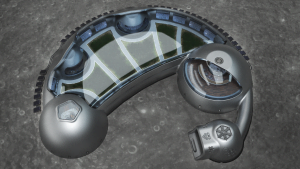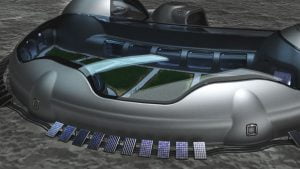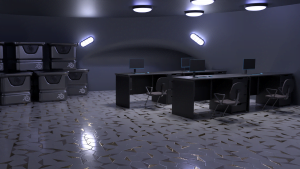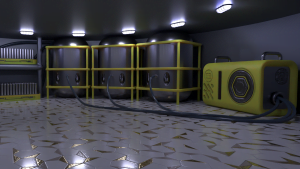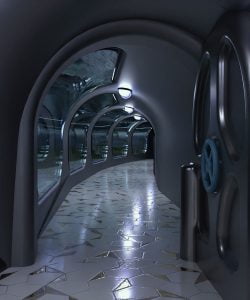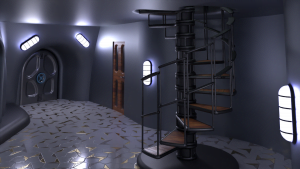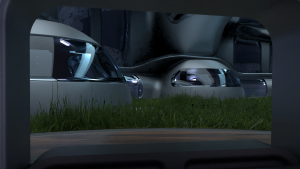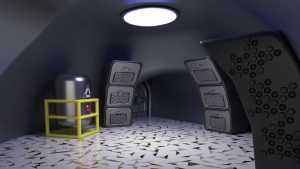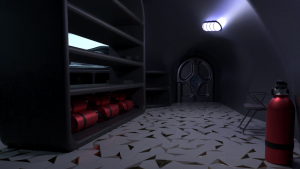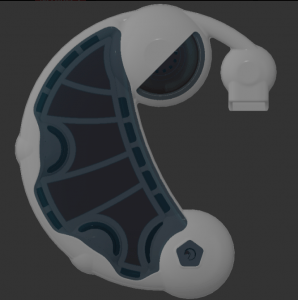Moon Camp Pioneers Gallery 2020-2021
In Moon Camp Pioneers each team’s mission is to 3D design a complete Moon Camp using Fusion 360. They also have to explain how they will use local resources, protect astronauts from the dangerous of space and describe the living and working facilities.
Team: MoonMeisters
Colegiul National “Mihai Eminescu” Suceava Romania 18, 17 Second Place – ESA Member States
External viewer for 3d project
|
Project description
Hyperion1918 is not just a human habitat on the moon, but is also designed to be a gateway to other more distant planets. Not only is the moon a great training ground for us in order to attempt a successful landing on other planets but, is also a more propitious place for the astronauts to set sail, as there are more take-off opportunities than we have on Earth. Our base is designed to shelter five astronauts and consists of five domes, each with a specific function and name: Bendis (HQ and laboratory), Hypnosis (sleep and relaxation), Hermes (hangar), Hefaistos (storage), Dyonisus (dining room and kitchen) and the greenhouse named Demetra. Bendis dome contains the laboratory where we will study the lunar rocks, ice and dust, the basement which has a water purifier, oxygen and water tanks and emergency batteries and the head quarters which has a geographical map of the moon in the centre of the room and in front of the huge window, which can be switched to a high tech monitor for live conferences with the Earth, being designed as a semi-circle table for the astronauts. Hypnosis dome contains on the first floor a space for physical activities, a dressing room, a bathroom and a room for the astronauts to shower and a door to the Demetra space. The upper floor contains five identical bedrooms, which contain a bed, table, bedside table and a wardrobe. |
|||
|
Where do you want to build your Moon Camp?
The lunar poles are geographical sites that offer many advantages when it comes to space exploration. We will build our moon base on the northern rim of Peary crater. First of all, being the crater closest to the north lunar pole, it is almost constantly illuminated, which creates an environment with relatively stable temperature and gives a secure source of solar energy. Second of all, studies suggest that it’s nearly the constant shadowed areas that may contain frozen water that could represent relatively pristine cometary or asteroid material which has existed on the Moon for millions or billions of years. We can mine this frozen water and use it in scientific experiments or we can use it as a source of potable water. How do you plan to build your Moon Camp? Describe the techniques and materials you would use.
Following the same assembly path as ISS, modules for our moon camp will be built on Earth. Each module will be then sent to the moon, together with robots that will assemble the moon base exactly like a puzzle. Once the base is all set up, it is time for astronauts to fill the space with furniture. To do so, we will first send a rocket that would transport astronauts and the needed materials to start the construction. The furniture is designed to offer the minimum of comfort required in the long run. We will use titanium for walls and transparent silicate fiberglass for windows. Not only is our base designed to enchant the eye and give a sense of harmony for the astronauts living inside, but it also has many symmetrical components, so stacking them up would allow transporting many modules in one rocket. All five semi-spheres can be broken down into symmetrical plates, as well as the slightly curved cylinder halls. Moreover, domes are very efficient architectural structures, as they are stronger, lighter, and quicker to construct than more traditional buildings. They also enclose a large amount of space with minimal materials, labor, and energy. The environment on the Moon is very dangerous for the astronauts. Explain how your Moon Camp will protect them.
When we chose the design and materials for our moon base, we took in consideration the radiations, meteorites and high temperature fluctuations. On that account, the walls are made out of titanium. In addition to having low thermal conductivity and excellent mechanical strength, titanium is also flexible yet durable and shock resistent, which means our astronauts are protected from high temperature fluctuations and meteorites. By the same token, instead of regular glass we will use transparent silicate fiberglass, and the inside of the walls will be covered in demron, which will add extra protection against cosmic radiations. Also, the indoor shed doors are designed to seal the room, that way the base will not be exposed to the void and the pressure and oxygen level can be brought to normal in safe parameters. Explain how your Moon Camp will provide the astronauts with:
|
|||
|
Water
|
Food
|
Electricity
|
Air
|
|
After the base is set up, the frozen water located near our base will be mined out, melted and filtered so it can be stored and used back at the base. After that, all of the used water will be filtered through a water purifier, including urine. This sistem should, over time, increase the quantity of water available on base, as the volume of water produced from urine is about 10% more than the intake, due to oxidation of food. Furthermore, leftovers from filtering urine can be used as soil fertilizer. |
Astronauts can’t live off packed food forever, but they will have to do so for the first few months, until the vegetables in the greenhouse will grow. Crew members will mainly live off a plant based diet, with additional meat and proteins supplies from earth. Vegetables will be grown by botanists in the greenhouse, where we will plant potatoes, green peas and soybeans for carbohydrates, sugars, calcium and fiber, vitamins A, K, C; watermelon and cucumber for their high water consistency and for sugars. |
Since our site is almost constantly illuminated, during the lunar day our main source of electricity would be the solar panels. Even if the lunar night is significantly short, we would still have to use back up batteries for all the appliances and laboratory devices to be able to keep the base up and running, knowing that the average power percentage used in one month is higher than 1200kw. Also, the batteries may be useful in case of a solar panel malfunction. |
At the beginning of our journey we will use compressed air brought from earth. As our plants are growing, providing yet another source of oxygen, we will electrolyse water found on the moon to obtain oxygen and hydrogen (which can be reused in the same |
|
Explain what would be the main purpose of your Moon Camp (for example: commercial, scientific, and/or tourist purposes).
Although it is not impossible to extend Hyperion1918 into a touristic lunar base in the future, when we designed this model we prioritized scientific experiments. First of all, studying lunar soil, rocks and underground ice can not only give significant insight into how the moon formed billions of years ago, but will also help scientists constrain models of impacts on the lunar surface and the effects of meteorite gardening, photodissociation, and solar wind sputtering on the Moon. Last but not least, Hyperion1918 can be used as a gateway to future missions to other more distant planets such as Mars, as we have more take-off opportunities from the Moon than we have from Earth. Moreover, it offers great insight into space surviving techniques that can be developed in a relatively safe location that is close to Earth. |
|||
|
Describe a day on the Moon for your Moon Camp astronaut crew.
A day on the Moon is very different to one on Earth. The task-focused lifestyle of the astronauts, as well as isolation from the rest of the people on Earth and the inconsistent day-night cycle are just some of the obstacles for the outpost community. Overcoming them is a key step to fully exploiting research opportunities that the Moon offers us. As the “open space” in the Demetra greenhouse is mainly illuminated by the Sun, the day-night cycle can be achieved by darkening the glass ceiling at certain hours. In case of an emergency, it is crucial that at least one astronaut is awake at any given moment. To ensure that, each member of the crew will go to sleep 2 hours after the one before them and wake up accordingly. That way, all astronauts will be awake at the same time for at least 8 hours a day. When all crew members are awake, they will gather in the headquarters department to communicate with Earth and establish the schedule for the day. While all members of the crew are awake, focus on socialization is crucial in order to sustain the mental health of each astronaut and they`re well-being. There are 3 main tasks to be done at the outpost, each assigned accordingly to the astronauts. Two of them will work in the research field, another two will be responsible for the greenhouse and preparation of food and the last one will be in charge of maintenance, although each astronaut should have the skills and the reaction time to jump from one task to another. What will the research members of the crew do all day? Using distance monitored rovers, they will collect samples from lunar soil, rocks and ice, study them and get as much information as possible in the laboratory, as well as preparing and purifying drinking water for the rest of the crew. The maintenance involves in the first part to register all the equipment and resources located in the Hefaistos dome as well as cleaning the samples gathered. Moreover, the one in charge has to make sure that the power level and the machines and devices as well as all the tech is in proper shape and ready to go. After a long day of work, what is better than to peak at the magnificent view of Earth and the wonders of the universe? |
|||


